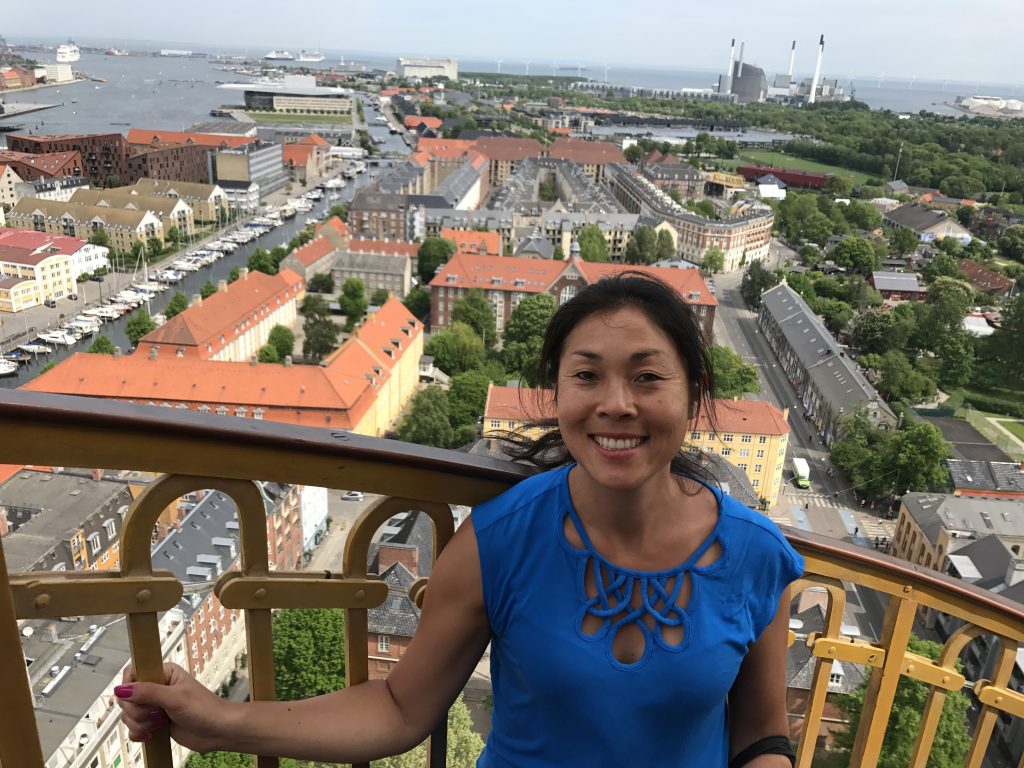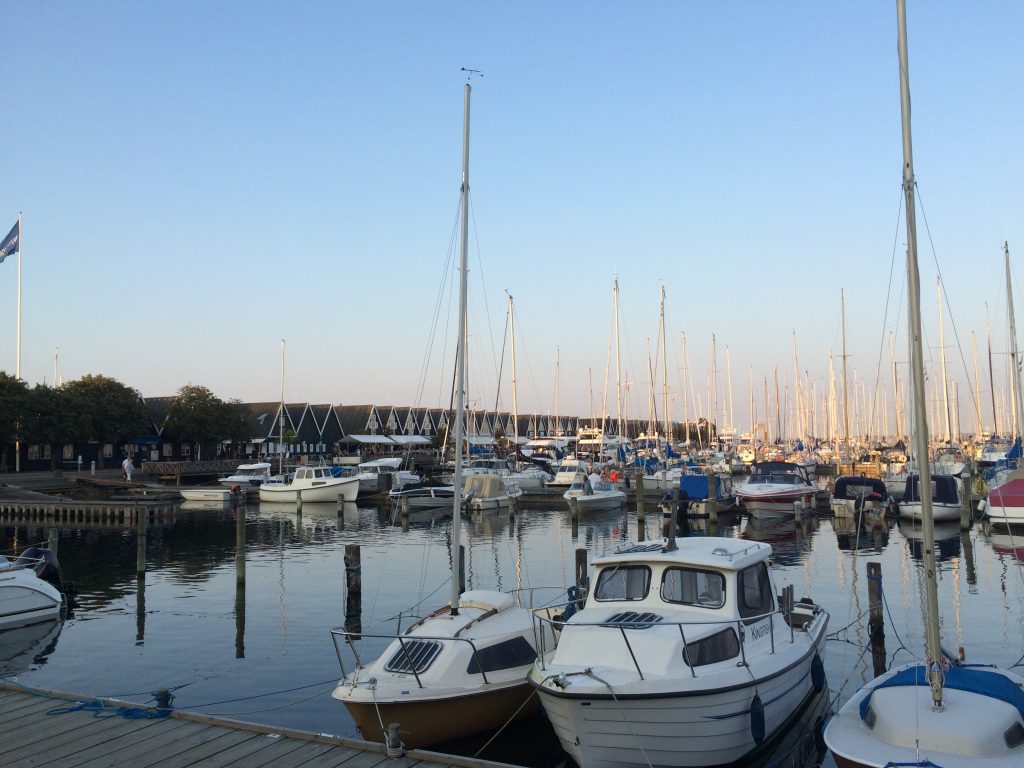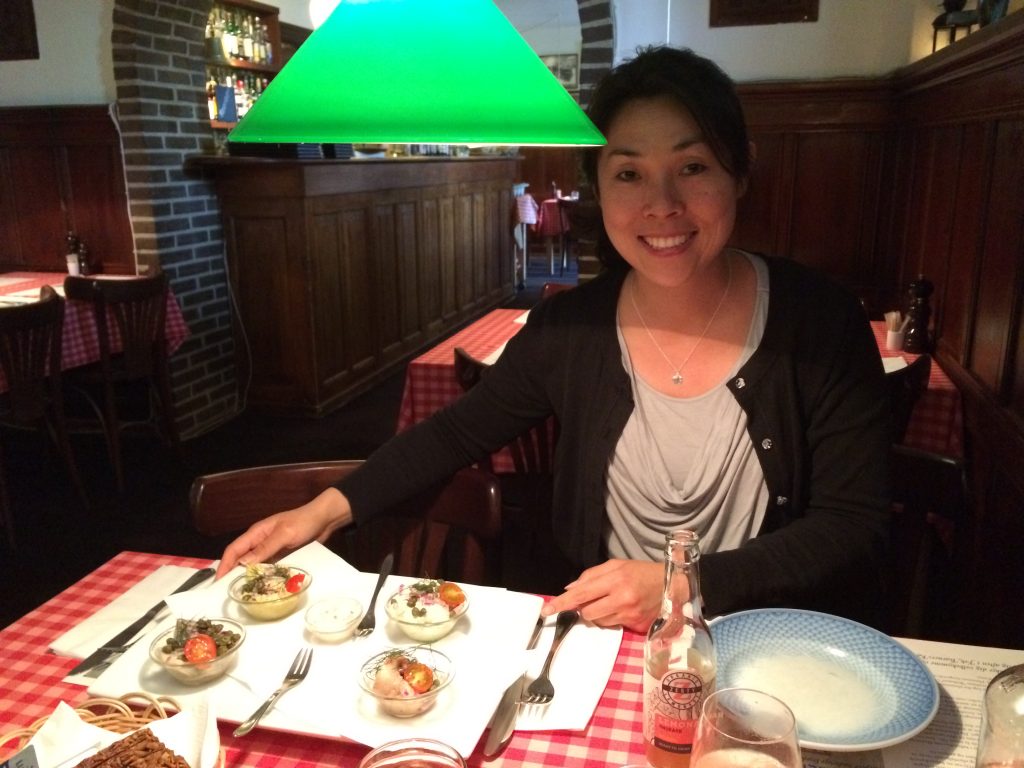As part of this post on travel to Denmark, I counted in my calendar how many times I have visited Denmark. According to my records, I have visited at least 30 times. Out of the 30 times, one was for fun and the rest were for work! My record-keeping prior to 2012 was not very good as that’s when I started saving events to GoogleCalendar.
I clearly remember my first travel to Denmark was in December 2002. My friend Soren had invited me to visit for the holidays because I was an ex-pat orphan. By this, I mean that I was not able to travel back to California, so I was one of a few students left in Cambridge. Luckily, he and his family welcomed me warmly, and showed me around Aarhus, Odense, Middelfart, and Copenhagen. That winter hit some record cold temperatures of around -14C so I had to borrow some more appropriate clothing. As a Californian, I was not well-prepared….
Denmark is a wonderful and friendly place to visit. Almost everyone speaks English and it feels very safe. The trains work well to go between cities. There is a mix of natural beauty and interesting cities.
I feel lucky that my job in Paris allowed me to travel to Copenhagen many times. I’ll write some separate posts specifically about Copenhagen as I have had a lot of time to explore the city. There are some excellent places to eat, lots of history, beautiful architecture and more! For now, here is a short guide on travel to Denmark.



Highlights
- Copenhagen– there is so much to see and eat here so I will write a separate post soon. Here are a few highlights:
- Nyhavn
- Tivoli Gardens
- Little Mermaid Statue
- Amalienborg Palace
- Christiana
- Carlsberg Brewery
- Karen Blixen Museum in Rungstedlund
- Odense, on the island of Funen:
- Hans Christian Anderson museum
- Town hall and square
- Odense Cathedral
- Aarhus:
- Den Gamle By – living city museum
Before you go
- Denmark is in Europe but it does not use the Euro for currency. The currency is the Danish krone
- Most people speak English though the official language is Danish
- Cycling is a common mode of transport in addition to trains, metro, and cars
- Winter weather is usually cold and sometimes snowy. The days are also very short, and there are a mix of bright and grey days. In contrast, the summer is usually sunny and slightly warm
- Denmark has been voted the happiest country in the world on more than one occasion. A Danish friend told me that’s because they have low expectations! In general, I have found Danish people to be friendly and helpful



Transport
- Copenhagen airports is easy to navigate and a good place to arrive in Denmark. However, there are many other smaller airports around the country, especially with the low cost airlines. I have also flown into Aarhus and Esbjerg
- Copenhagen airport is well-connected. There is a train to the central station which runs often and takes about 15 minutes. Additionally, the metro from the airport is useful to reach other destinations around Copenhagen. Taxis are also an option but are a lot more expensive
- Trains between the major Danish cities are reliable and clean. There are also trains to other countries, including Sweden and Germany.
- Cycling is a very popular mode of transportation, but if you try this then make sure you know the traffic rules. Although there are bike lanes, people cycle very fast and you need to know the rules of the road.
Accommodation
- Unfortunately, I do not have any recommendations for Odense nor Middelfart as I stayed with my friend’s family. However, in the future Copenhagen post I will give my ranking of the many hotels I have stayed at.
- In summary, my favourite hotels were the Axel Guldsmeden and the Imperial Hotel. First, the Axel Guldsmeden is eco-friendly and has a unique decor in a small boutique setting. I liked the wooden toothbrushes and the healthy breakfasts. Also, the beds were extremely comfortable with duvets you could burrow in for a good night’s sleep. In contrast, the Imperial hotel is in a large building and looks more like a commercial hotel. The service was always friendly and the beds comfortable most of the time. Once I had a very soft bed that I almost sank into. However, they had the best breakfast buffet which really started out my day well every time. So for that I give it top marks. It’s also in a very peaceful location near the lakes.
Currency
Although Denmark is in the European Economic Area, its currency is the Danish Krone and not the Euro. As of January one British pound is about 9 krone. Don’t lose the coins as some of them are worth more than 2 pounds!
I recommend to check the currency conversion just before you leave as this fluctuates




Food
Fish is almost always on the menu in Danish restaurants. One of the specialties is pickled herring on an open-faced rye bread sandwich. I think you either love or hate it as the flavour is strong. I love it and especially curried pickled herring! Before trying it I never would have guessed curry and fish go well together. In a previous recipe post, I made a fried plaice sandwich with curry sauce called Smørrebrød med paneret rødspætte.
I highly recommend trying Danish pancakes, which are like a thicker version of crepes. My friend Soren’s dad made these when I visited, and I have found them rarely for breakfast in restaurants. However, there is no shortage of breakfast food in Denmark. The pastries are delicious and quite substantial yet not heavy. You can’t go wrong with Lagkagehuset, which is a chain in Denmark known as Ole & Steen in the UK. By the way, Danish people do not call “Danishes” by the name we use in the US for the bread-like pastries with a fruity centre. Funnily enough, my Danish friends call these Wienerbrød (Vienna bread)!
I’ll write more about specific recommendations for Copenhagen in a future post. There are lots of local, casual eats and also restaurants with fine dining.
FAQs
Q: Do I need a tour guide?
A: No, you can get around the country conveniently by public transport. If you do some research about where you want to go and what you want to see, you can find your way around.
Q: Do people speak English?
A: Yes almost everyone speaks English. Even at the post office, the man at the counter asked in perfect English if I needed any help.
Q: Can I travel solo?
A: Yes it is very safe and public transport is good
Q: How easy is it to send postcards? It is easy to find postcards in the larger cities like Odense and Copenhagen. And it’s also easy to buy stamps from post offices where almost everyone speaks English.
A: See Sending Postcards from Abroad for details on cost and the time it took to reach the USA.
Go to Country Map
